Christmas Spirit Index: Most Christmassy U.S. States English

Written by
Ernest Bio Bogore

Reviewed by
Ibrahim Litinine
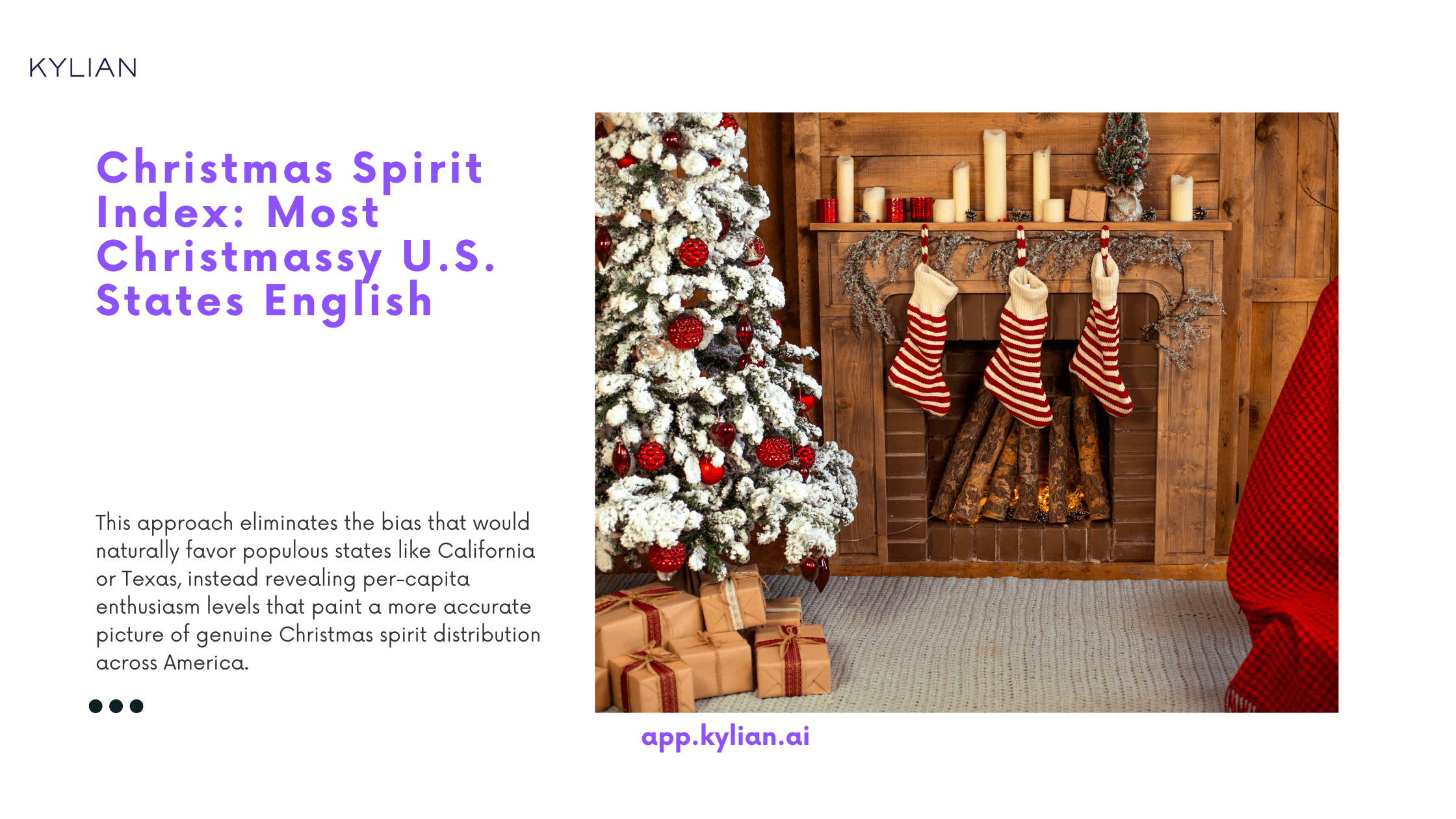
Search behavior reveals more about American culture than we often realize. When millions of Americans simultaneously search for Christmas-related terms, their collective digital footprint creates a measurable index of festive enthusiasm across state lines. This data-driven analysis examines which U.S. states demonstrate the highest Christmas spirit through their online search patterns, uncovering surprising regional variations that challenge conventional assumptions about holiday celebrations.
The methodology behind this analysis centers on Google search volume data for Christmas-related keywords throughout 2024, adjusted for population density to ensure fair comparison across states of varying sizes. This approach eliminates the bias that would naturally favor populous states like California or Texas, instead revealing per-capita enthusiasm levels that paint a more accurate picture of genuine Christmas spirit distribution across America.
Most Christmassy U.S. States: Regional Analysis
Top-Ranking Christmas Spirit States
Utah claims the top position in Christmas spirit intensity, a finding that initially appears counterintuitive given the state's desert landscape and Mormon cultural context. However, deeper analysis reveals logical drivers: Utah hosts internationally recognized Christmas events including major holiday concerts, operates extensive Christmas markets, and serves as a premier winter tourism destination. The state's strong community-oriented culture translates directly into heightened collective celebration of Christmas traditions.
Massachusetts secures second place, demonstrating that New England's historical Christmas traditions remain deeply embedded in contemporary culture. The Bay State's position becomes particularly interesting when considering its historical relationship with Christmas celebrations—Massachusetts actually banned Christmas observance in 1659, imposing fines on celebrants. This historical tension may have paradoxically strengthened modern Christmas enthusiasm as a form of cultural reclamation.
Virginia rounds out the top three, supported by its claim as one of America's earliest Christmas-celebrating regions. Historical records indicate Christmas services occurred in Jamestown as early as 1608, establishing Virginia as a foundational Christmas state. This deep historical connection manifests in contemporary search behavior, suggesting cultural memory influences digital engagement patterns.
Regional Performance Patterns
The Northeast emerges as America's most Christmas-obsessed region, claiming the highest concentration of top-20 states. This concentration reflects several convergent factors: historical European Christmas traditions brought by early settlers, established cultural infrastructure supporting holiday celebrations, and population density that amplifies collective cultural events.
Conversely, the Midwest shows surprisingly low Christmas spirit representation, with only Illinois and Nebraska penetrating the top 20 rankings. This regional underperformance contradicts stereotypical assumptions about heartland Christmas enthusiasm, suggesting that rural cultural patterns may emphasize private rather than searchable Christmas activities.
States with Lowest Christmas Spirit
Bottom-Tier Analysis
Alaska occupies the bottom position, representing the study's most counterintuitive finding. Despite possessing quintessentially Christmas-associated features—snow-covered landscapes, wild reindeer populations, and extreme winter conditions—Alaskans demonstrate the lowest Christmas search activity per capita. This paradox suggests that year-round exposure to Christmas-like conditions may diminish the novelty and specialness typically associated with holiday seasons.
Wyoming ranks forty-ninth, continuing the pattern of western states showing reduced Christmas enthusiasm. Wyoming's rural character and emphasis on individual rather than community celebrations may contribute to lower collective Christmas search activity.
South Dakota completes the bottom three, reflecting broader trends in rural state Christmas engagement patterns. The state's sparse population density and limited major Christmas events infrastructure may reduce the search-driving enthusiasm found in more urbanized regions.
Geographic Implications
The concentration of low-Christmas-spirit states in western and rural regions reveals important cultural patterns. These areas often emphasize outdoor recreation, individual activities, and practical concerns over ceremonial celebrations. Additionally, newer settlement patterns may lack the generational Christmas tradition accumulation found in eastern states.
Santa Skepticism Across America
Regional Skepticism Patterns
Search volume analysis for "Is Santa real?" reveals distinct geographical patterns of Santa-related skepticism. Pennsylvania leads this skepticism ranking, potentially influenced by diverse cultural traditions including German and Dutch holiday figures like Belsnickel, who differs significantly from traditional Santa mythology.
Massachusetts, despite ranking second in overall Christmas spirit, simultaneously demonstrates high Santa skepticism. This apparent contradiction suggests sophisticated Christmas celebration that separates religious and cultural elements from specific mythological figures. Massachusetts residents may embrace Christmas traditions while maintaining rational skepticism about Santa's literal existence.
The Northeast's dominance in both Christmas spirit and Santa skepticism categories indicates a complex regional relationship with holiday traditions—enthusiastic about celebration but analytical about supernatural elements.
Western States and Santa Belief
Western states demonstrate notably higher Santa belief rates, with eleven of the top twenty Santa-believing states located west of the Mississippi River. This pattern suggests that newer settlement areas may embrace traditional mythology more readily than regions with longer cultural development periods.
Hawaii, Montana, and Alaska occupy the top three positions for Santa belief, creating an interesting contrast with Alaska's low overall Christmas spirit ranking. This suggests that belief in Santa can exist independently of general Christmas enthusiasm, possibly reflecting different cultural mechanisms.
Cultural and Historical Context
Christmas Tradition Evolution
American Christmas traditions represent amalgamations of diverse cultural influences, each contributing distinct elements to contemporary celebrations. English traditions contributed Santa Claus mythology derived from Saint Nicholas, while German influences introduced Christmas trees and elaborate decorative traditions. These layered cultural contributions create regional variations that manifest in contemporary search behaviors.
State-by-state variations reflect these historical settlement patterns. Areas with strong German heritage often demonstrate different celebration emphases than regions influenced primarily by English or Scandinavian traditions. These cultural sediments continue influencing modern digital behavior patterns.
Economic Factors in Christmas Spirit
Economic conditions correlate with measured Christmas spirit levels, though not always in expected directions. States with higher disposable income often show increased Christmas-related searches, reflecting greater capacity for elaborate celebrations requiring research and planning. However, some economically challenged regions demonstrate heightened Christmas enthusiasm, possibly reflecting cultural emphasis on celebration as emotional relief from economic stress.
Tourism economics also influence Christmas spirit measurements. States receiving significant holiday tourism naturally generate increased Christmas-related searches from both residents and visitors planning celebrations. This economic driver may amplify measured Christmas spirit beyond authentic local enthusiasm levels.
Child Psychology and Santa Conversations
Developmental Patterns in Santa Belief
Research indicates that American children typically begin questioning Santa's existence around age eight, coinciding with developing critical thinking capabilities. This developmental milestone creates challenging conversations for parents navigating between maintaining childhood magic and respecting emerging rational capabilities.
The approach to these conversations varies significantly across cultural and regional contexts. States demonstrating higher Santa skepticism may reflect parental approaches that emphasize critical thinking over mythological acceptance, while high-belief states may prioritize imagination and wonder preservation.
Practical Navigation Strategies
When children raise Santa questions, parental responses should validate curiosity while preserving appropriate developmental experiences. Rather than simple confirmation or denial, effective approaches involve discussing Christmas spirit symbolism and the cultural value of generous behavior that Santa represents.
Children with younger siblings present particular challenges, as premature Santa revelation can impact family dynamics. Successful navigation involves enlisting older children as co-conspirators in maintaining younger siblings' experiences, transforming potential disappointment into empowerment.
Implications for American Culture
Digital Culture Reflection
Christmas spirit search patterns provide unprecedented insight into American cultural geography. Traditional cultural analysis relied on surveys, observations, and economic data, but digital search behavior reveals authentic interest levels free from social desirability bias affecting survey responses.
These patterns suggest that American cultural homogenization remains incomplete, with distinct regional characteristics persisting despite increased connectivity and media standardization. Christmas celebration styles continue reflecting historical settlement patterns, economic conditions, and local cultural influences.
Future Cultural Trends
Current data suggests that Christmas spirit intensity may be shifting geographically, with traditional strongholds like the Northeast maintaining cultural leadership while western regions develop distinct celebration patterns. Understanding these trends helps predict future American cultural development and regional identity evolution.
The persistence of regional variation in Christmas celebration suggests that local culture remains resilient against homogenizing influences, indicating that geographic identity continues influencing American cultural expression in measurable ways.
Methodology and Data Considerations
Research Framework
This analysis combines twelve Christmas-related keyword search volumes across all U.S. states during 2024, creating comprehensive Christmas spirit measurements. Population adjustment ensures fair comparison between states of vastly different sizes, revealing per-capita enthusiasm rather than absolute search volume.
Santa skepticism measurement focuses specifically on "Is Santa real?" search volume, providing direct insight into regional questioning patterns. This methodology captures authentic curiosity rather than performance or social conformity, offering reliable cultural insight.
Limitations and Considerations
Search behavior analysis contains inherent limitations requiring acknowledgment. Rural populations may demonstrate different internet usage patterns affecting representation accuracy. Additionally, cultural groups emphasizing private rather than digital celebration may appear less enthusiastic despite authentic Christmas spirit.
Age demographics also influence search patterns, with younger populations generating higher digital activity levels. States with older average populations may show reduced search volumes despite equivalent celebration enthusiasm, requiring interpretive caution.
Learn Any Language with Kylian AI
Private language lessons are expensive. Paying between 15 and 50 euros per lesson isn’t realistic for most people—especially when dozens of sessions are needed to see real progress.
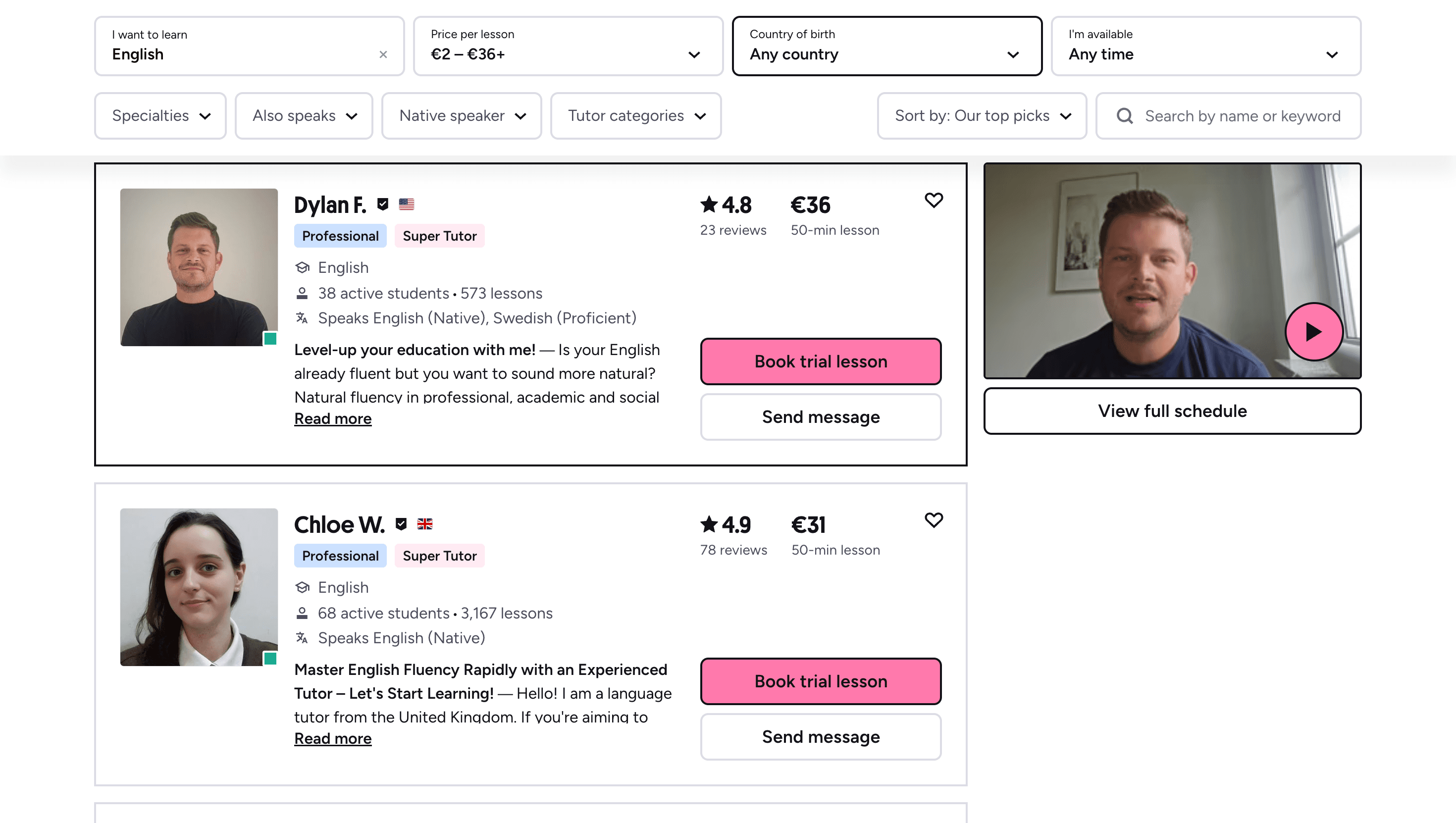
Many learners give up on language learning due to these high costs, missing out on valuable professional and personal opportunities.
That’s why we created Kylian: to make language learning accessible to everyone and help people master a foreign language without breaking the bank.
To get started, just tell Kylian which language you want to learn and what your native language is
Tired of teachers who don’t understand your specific struggles as a French speaker? Kylian’s advantage lies in its ability to teach any language using your native tongue as the foundation.
Unlike generic apps that offer the same content to everyone, Kylian explains concepts in your native language (French) and switches to the target language when necessary—perfectly adapting to your level and needs.
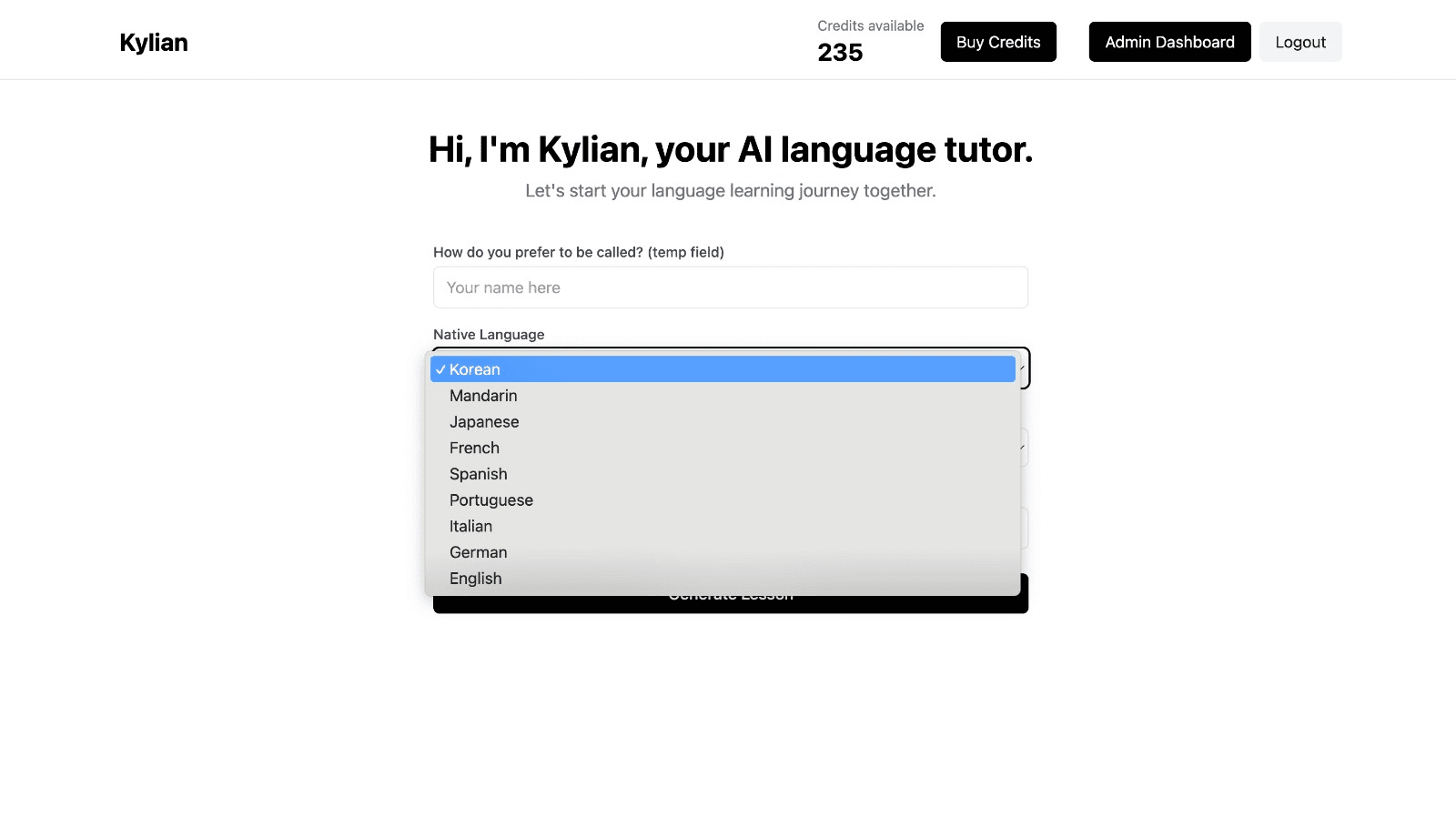
This personalization removes the frustration and confusion that are so common in traditional language learning.
Choose a specific topic you want to learn
Frustrated by language lessons that never cover exactly what you need? Kylian can teach you any aspect of a language—from pronunciation to advanced grammar—by focusing on your specific goals.
Avoid vague requests like “How can I improve my accent?” and be precise: “How do I pronounce the R like a native English speaker?” or “How do I conjugate the verb ‘to be’ in the present tense?”
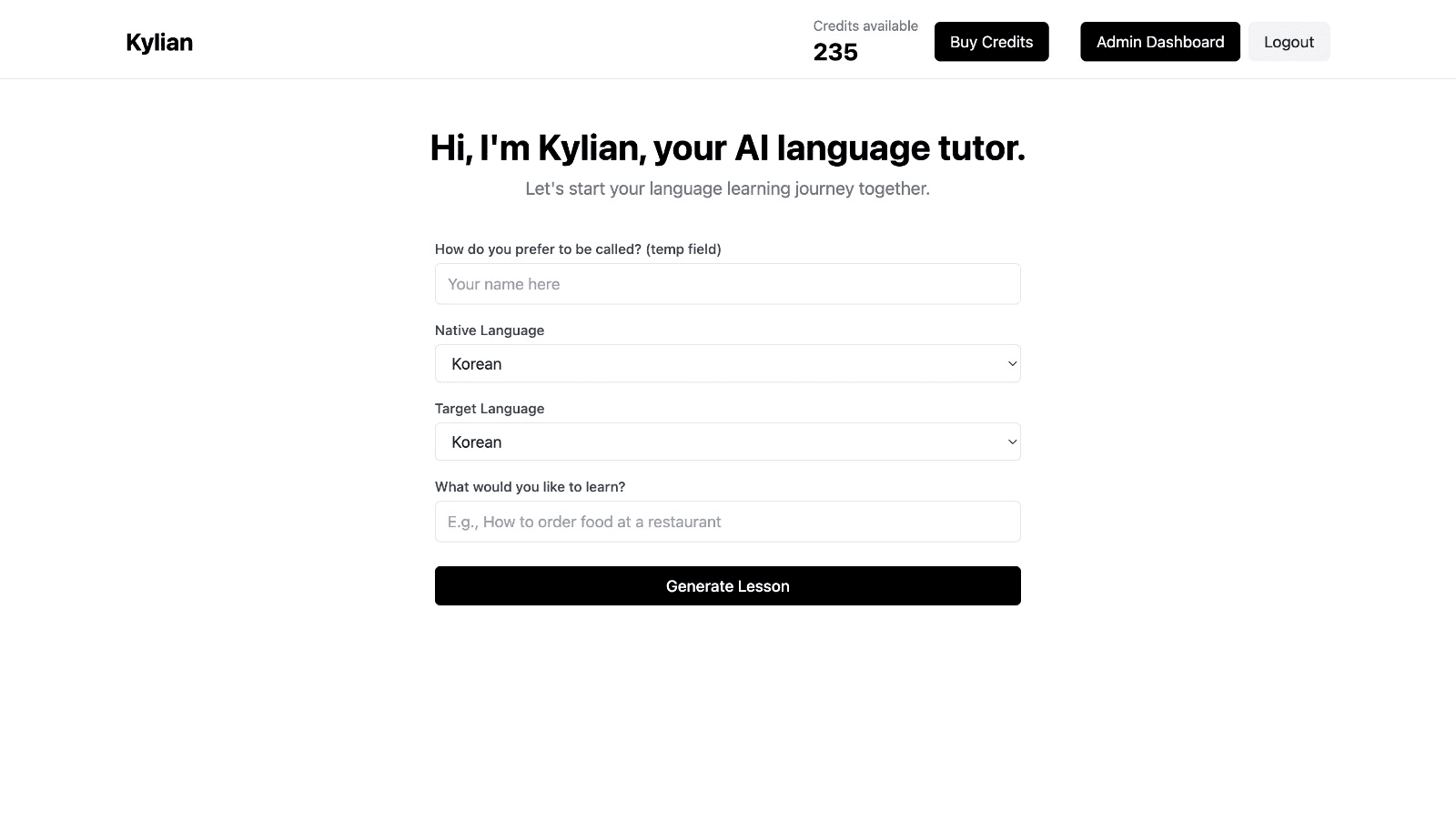
With Kylian, you’ll never again pay for irrelevant content or feel embarrassed asking “too basic” questions to a teacher. Your learning plan is entirely personalized.
Once you’ve chosen your topic, just hit the “Generate a Lesson” button, and within seconds, you’ll get a lesson designed exclusively for you.
Join the room to begin your lesson
The session feels like a one-on-one language class with a human tutor—but without the high price or time constraints.
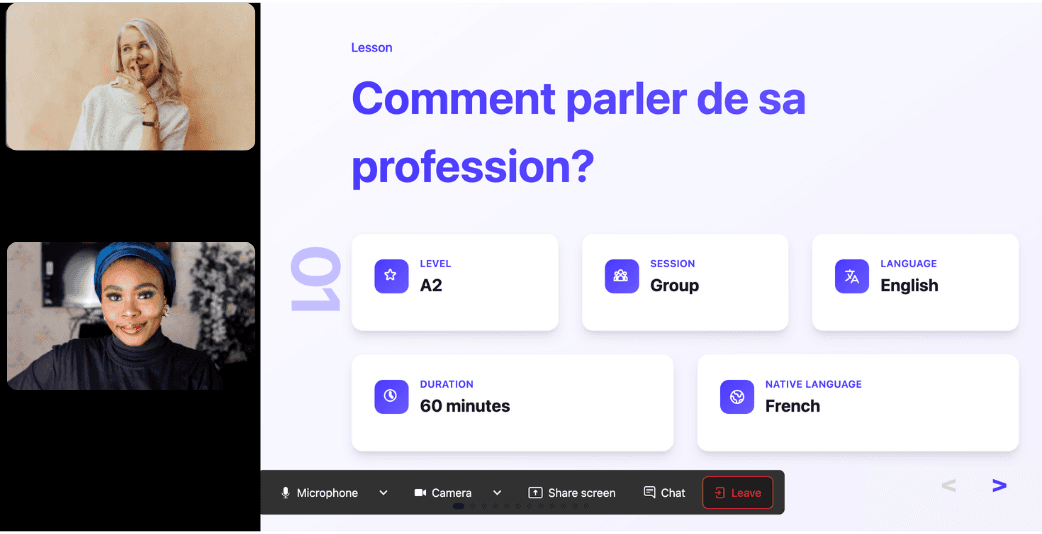
In a 25-minute lesson, Kylian teaches exactly what you need to know about your chosen topic: the nuances that textbooks never explain, key cultural differences between French and your target language, grammar rules, and much more.
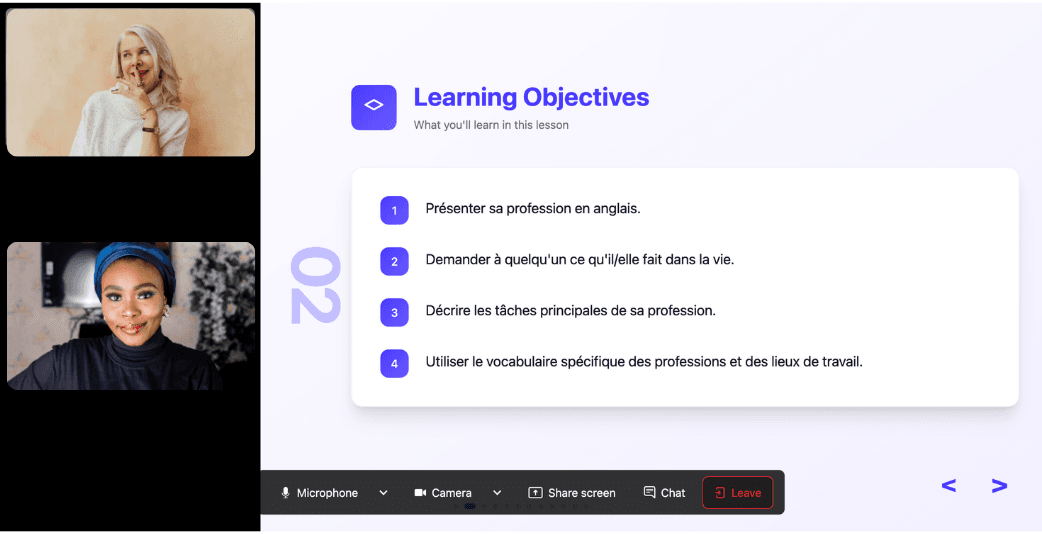
Ever felt frustrated trying to keep up with a native-speaking teacher, or embarrassed to ask for something to be repeated? With Kylian, that problem disappears. It switches intelligently between French and the target language depending on your level, helping you understand every concept at your own pace.
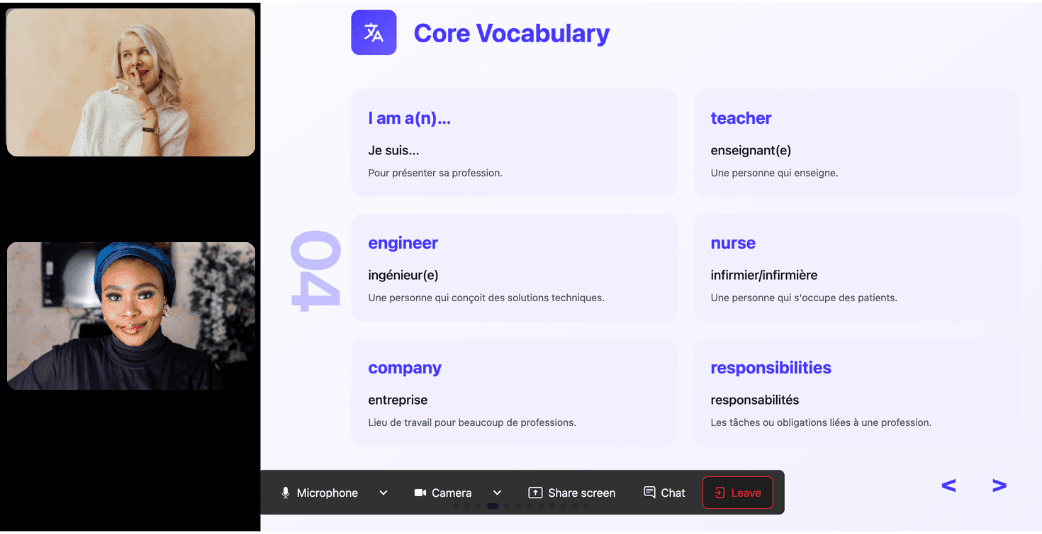
During the lesson, Kylian uses role-plays, real-life examples, and adapts to your learning style. Didn’t understand something? No problem—you can pause Kylian anytime to ask for clarification, without fear of being judged.
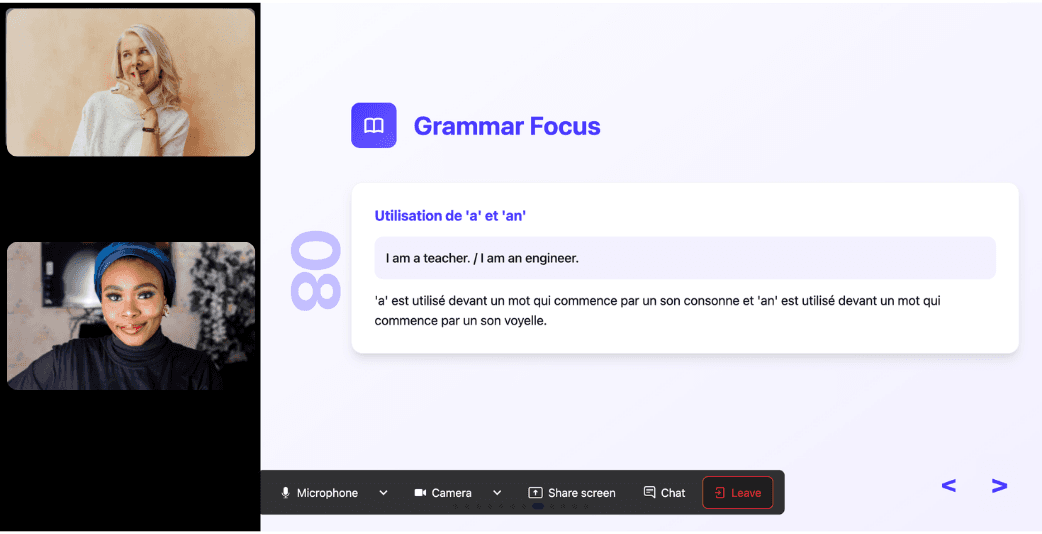
Ask all the questions you want, repeat sections if needed, and customize your learning experience in ways traditional teachers and generic apps simply can’t match.

With 24/7 access at a fraction of the cost of private lessons, Kylian removes all the barriers that have kept you from mastering the language you’ve always wanted to learn.
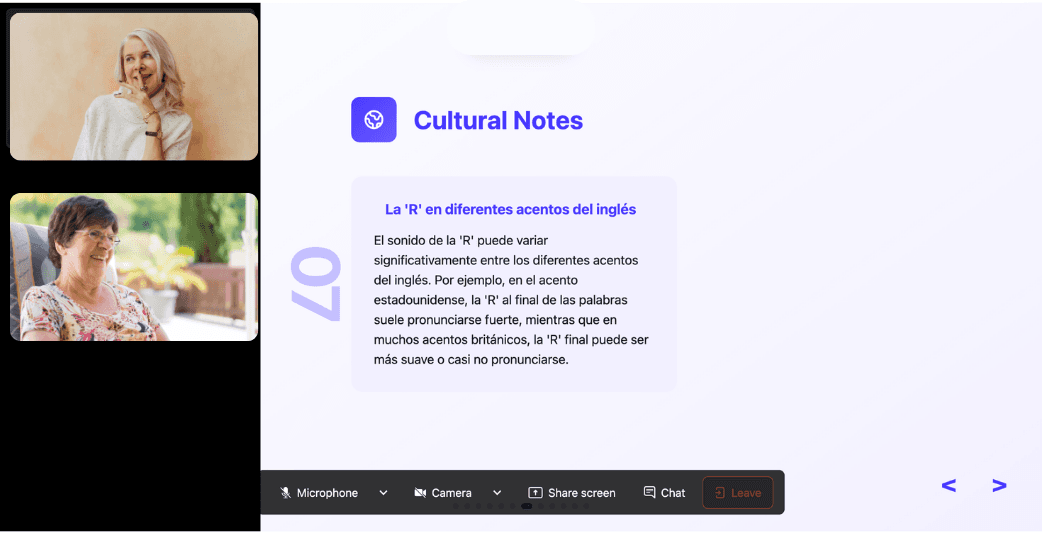
Similar Content You Might Want To Read

Complete Guide to French Months: Master Calendar Vocabulary
Mastering French months transcends simple vocabulary acquisition. Each month carries cultural weight, linguistic patterns, and grammatical rules that reveal deeper insights into French society and language structure. This systematic approach to French calendar vocabulary will transform your temporal expressions from basic translations to culturally informed communication. The strategic importance of learning French months becomes evident when considering their frequency in daily conversation. Temporal references appear in approximately 23% of conversational French, making month vocabulary essential for meaningful interaction. Beyond utility, French months connect directly to cultural celebrations, seasonal patterns, and historical commemorations that define French identity.

The Essential Guide to Saying "Thank You" in French
In every culture worldwide, expressing gratitude represents a fundamental social cornerstone. Yet in France, the art of saying "thank you" transcends mere politeness—it embodies an essential cultural practice deeply woven into daily interactions. Understanding the nuances of French gratitude expressions doesn't just prevent social faux pas; it demonstrates cultural literacy and respect that French speakers deeply value. This comprehensive guide examines the various expressions of gratitude in French across formal, casual, and written contexts. We'll analyze when and how to deploy each phrase effectively, examine crucial cultural context, and highlight common mistakes to avoid.

Learning French Accents: Practical Examples and Tips
French accents represent one of the most systematic yet misunderstood aspects of language learning. While 73% of French learners report initial confusion with accent marks, these diacritical symbols follow logical patterns that, once mastered, unlock both pronunciation accuracy and meaning differentiation that native speakers take for granted. The cognitive load of processing accented characters decreases significantly once learners understand their functional purpose rather than memorizing them as arbitrary decorations. Research from the Centre National de Ressources Textuelles et Lexicales indicates that accent errors constitute 34% of all French spelling mistakes among intermediate learners—a statistic that reveals both the challenge and the opportunity for targeted improvement. Consider this fundamental reality: accent marks in French are not optional embellishments. They serve as pronunciation guides, meaning differentiators, and historical markers that connect modern French to its etymological roots. When you write "résumé" instead of "resume," you're not just adding flair—you're communicating precise meaning through a standardized system that has evolved over centuries. This systematic approach to accent mastery begins with understanding why each mark exists and how it functions within French phonology. The five primary accent types—acute, grave, cedilla, circumflex, and trema—each serve distinct linguistic purposes that become intuitive once their underlying logic is understood.

The Useful Guide to Saying "Thank You" in Portuguese
In the realm of language acquisition, mastering expressions of gratitude stands as a fundamental milestone. When venturing into Portuguese-speaking territories—whether the bustling streets of Lisbon or the vibrant beaches of Rio de Janeiro—knowing how to properly express thanks transcends mere politeness; it establishes meaningful connection. The Portuguese language, like many Romance languages, incorporates nuanced ways to express gratitude that vary depending on context, relationship, and even the speaker's gender identity. This comprehensive guide delves into the multifaceted approaches to saying "thank you" in Portuguese, equipping you with practical knowledge for authentic interactions.

The Complete Guide to the Portuguese Alphabet: From A to Z
Learning a language begins with understanding its fundamental building blocks. For Portuguese learners, mastering the alphabet creates a solid foundation for pronunciation, reading, and spelling—essential skills that determine your fluency journey's success. Portuguese utilizes the Latin alphabet, making it initially accessible for English speakers. However, beneath this surface-level familiarity lie crucial differences in pronunciation, accentuation, and letter combinations that significantly impact comprehension and speaking ability.

How to Learn French Fast: A Step-by-Step Guide for Beginners
French—often called the language of love—carries an undeniable elegance, particularly in its melodic sounds. However, its grammatical complexities, inconsistent spelling patterns, and numerous rule exceptions can intimidate beginners. If you've ever dreamed of conversing with locals in Paris or working for a French organization, you might wonder if achieving proficiency requires years of dedication. The reality? With strategic learning approaches and consistent practice, you can reach basic conversational proficiency in mere months. This guide examines evidence-based methods to accelerate your French learning journey, with actionable steps to implement today. Let's begin!